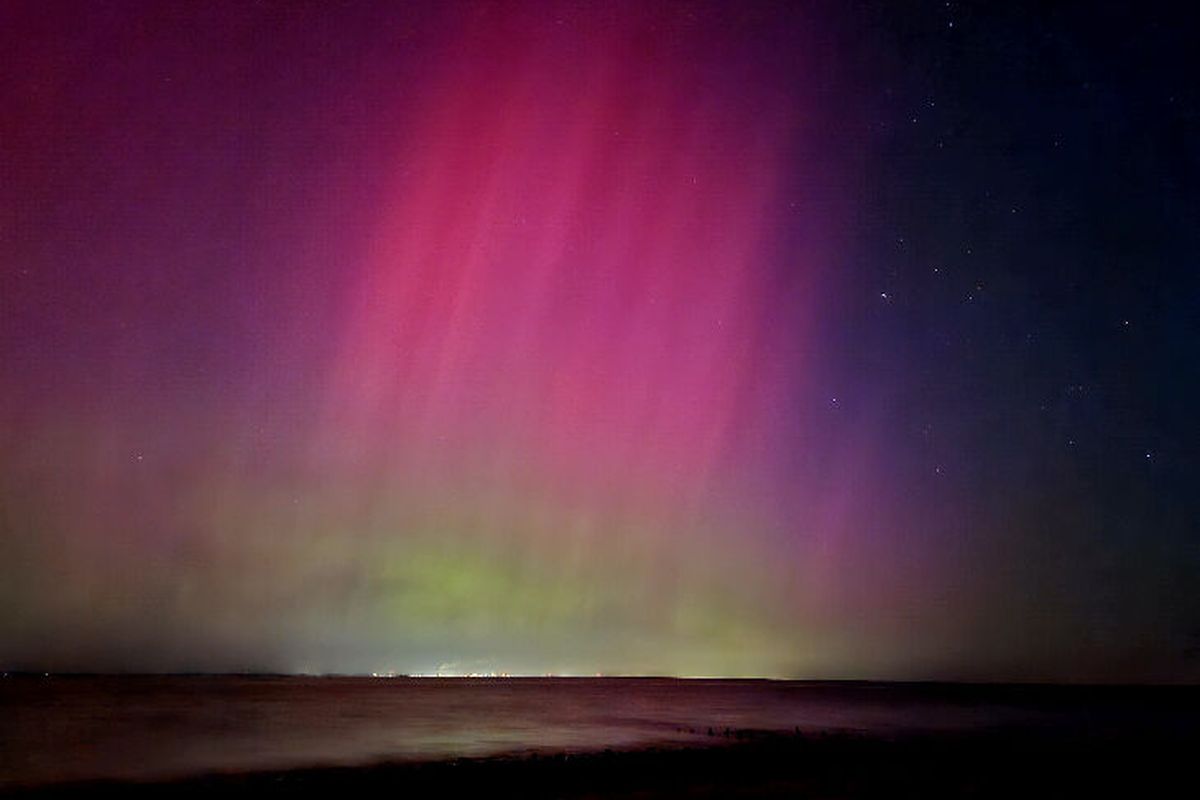Dramatic northern lights bathed U.S. skies during Perseid meteor shower

Sunday night was the peak of the Perseid meteor shower. But it was a surprisingly strong display of the northern lights that stole the show.
As shooting stars darted across the night sky, aurora shined as far south as California, Arizona, Texas and Mississippi. While the lights were faint and sometimes only viewable with a long camera exposure in southern locations, they put on a dramatic show to the north, featuring gyrating curtains of green light and vivid red pillars.
The display was the result of a strong geomagnetic storm. Geomagnetic storms occur when waves of plasma erupt from the surface of the sun and then bombard the Earth’s atmosphere.
The geomagnetic storm was more intense than predicted. Space weather forecasters at the National Oceanic and Atmospheric Administration had predicted a Level 2 storm on its 1 to 5 scale. This storm peaked at a 4 on Monday morning, which is considered “severe.” The associated planetary K-index reached 8 for a three-hour average indicative of a severe event.
The auroras brought back memories of a once-in-a-generation event during May in which the northern lights were seen in all 50 states and D.C., as well as rare places such as Puerto Rico, the Bahamas, Italy, Austria, Mexico and India.
The Perseid meteor shower – which peaked Sunday night into Monday morning – unleashed shooting stars at the same time, although the northern lights made them a bit more difficult to see. Under ideal conditions – away from city lights – the International Meteor Organization said skywatchers could expect to see 50 to 75 meteors an hour.
Persistent and skilled photographers were able to catch both the aurora and Perseid meteors in the same picture.
A moon that was less than half full and which disappeared below the horizon around midnight did not outshine the aurora or meteors, either. Cold fronts that recently swept much of the United States also helped clear skies ahead of the celestial show.
Numerous geomagnetic storms have hit the Earth this year as the current 11-year cycle is around its peak. When the solar cycle peaks, there are more sunspots on the sun’s surface, which are the source of the waves of plasma or “coronal mass ejections” that cause the geomagnetic storms.
On Aug. 9, NOAA’s Space Weather Prediction Center announced that the solar cycle “likely reached the highest sunspot number yet – a value of perhaps at least 299!”
Even on relatively low-resolution images of our nearest star, numerous sunspots are easily observed from flank to flank. Massive sunspot regions continue to rotate across the sun’s surface, blasting out solar energy.
While geomagnetic storms produce beautiful displays of the northern lights, they can disrupt or even damage spacecraft and power systems.
Space weather models forecast the possibility of more geomagnetic storms affecting Earth this week, while the sun remains active. Keep looking up – just in case!